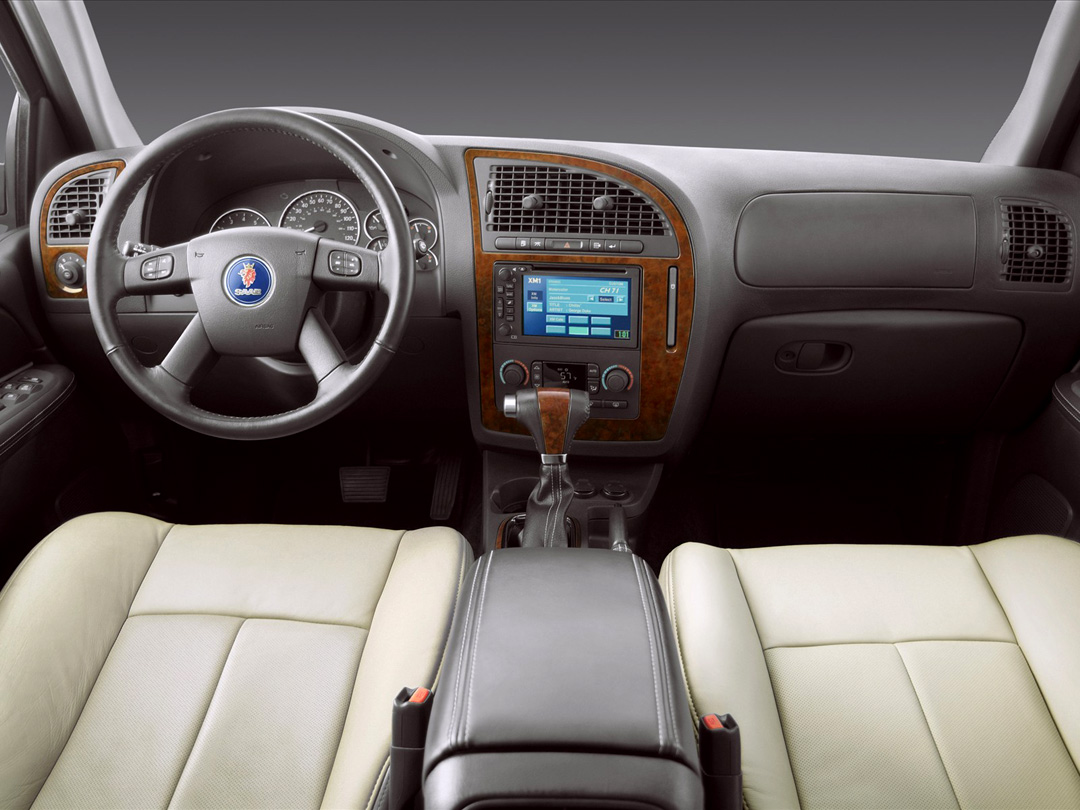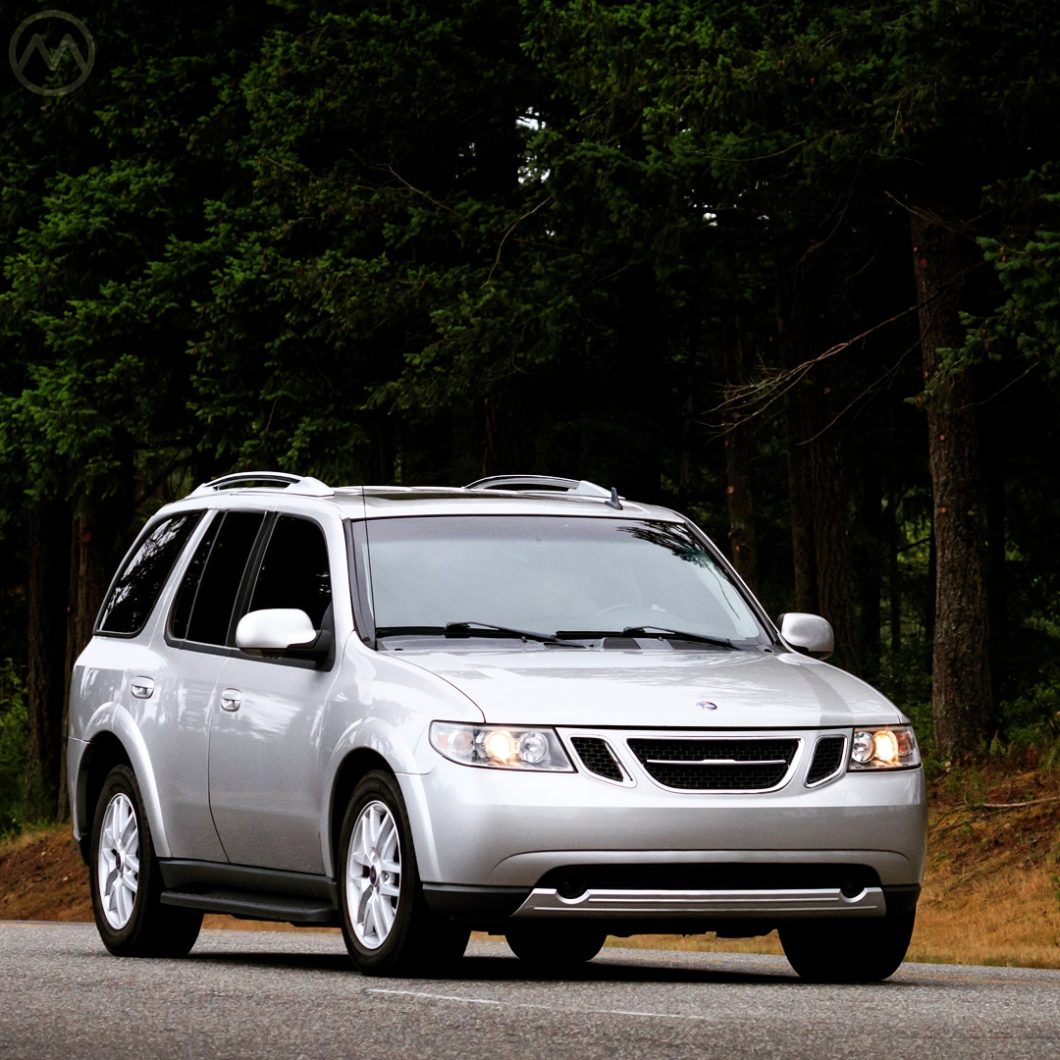Not-so-old Motors today and the famous (infamous?) “TrollBlazer.” Saab’s 9-7x was the least Saab-like Saab of all time and came to be a symbol of GM’s mishandling of its Swedish subsidiary.
It seemed like an answer to a question nobody asked – but that was incorrect. Saab’s American dealers had been asking for an SUV for years, but Saab’s volume made that cost prohibitive, until an unexpected opportunity opened up to create one on the cheap.
Saab’s people went to a fair bit of trouble to recast the GMT360 platform into something resembling a proper Saab – they just had a very limited amount of flexibility with what they were given. The GMT360 had already been in production for three years and it bore little resemblance to any previous Saab product.
Of the GMT360s – and there were many – the 9-7x was probably the nicest, particularly as the LS2-powered 9-7x Aero in 2008-2009, but Saab purists hated it and the market largely ignored it.
So why’d they build it at all, you ask?
Saab’s U.S. sales were actually up quite a bit in the early 2000s. On the strength of the then-new second-gen 9-3, 2003 was the brand’s best year in America since 1984, just 700 or so sales shy of Saab’s all time U.S. sales record. Despite that success, volumes were still relatively small – about 48,000 units – and management felt that Saab was losing customers to the Lexus RX300 (introduced in 1998) Volvo XC90 (2001), and VW Touareg (2002).
According to Saab at the time of the 9-7x’s launch in early 2005, 30% of Saab owners were defecting to SUVs and dealers had been asking for some sort of SUV since 1999.
Oldsmobile’s End
At the same time, buyers were defecting en masse from Oldsmobile, and GM decided to wind down its oldest brand in December of 2000. The phase-out would take place from 2001 to 2003, but in that time, one last new Oldsmobile was launched – the third generation Bravada SUV.
Already in the works in December of 2000, the Bravada debuted only two months later amid the other GMT360 offerings – the Chevy Trailblazer and GMC Envoy.
The Bravada won considerable critical praise early on, but GM’s decision was final and Bravada production would end in early 2004. Having designed a “premium” GMT360, the end of the Bravada made way for two replacements – a Buick-ized Bravada called the Rainier and, finally, an SUV for Saab.
Both of these new products would be built where the Bravada had been built, at Moraine, Ohio alongside the Envoy, Trailblazer, and yet another variation – the Isuzu Ascender (introduced in 2002).
The GMT360 was a big, traditional, body-on-frame SUV. It was completely unlike any product Saab had ever offered, and also unlike the RX300 or XC90, which were trucks that largely used car-based underpinnings. But the only way Saab was getting an SUV was to make economies of scale (always Saab’s achilles’ heel) work. So the Trollhätten team set to work to try and remake the GMT360 into a Saab.
Creating the Saab 9-7x
Saab’s design director Simon Padian, with the company since just before GM’s investment in 1989, was tasked with altering the shape. The goal was to remake everything the customer could see and feel without dramatically altering the cost. Below the beltline, the truck looked convincingly different, but it had to use the Bravada/Rainier greenhouse and roof.
The Saab got its own sober, Swedish-style interior which was largely unique, including the key-in-the-console treatment Saab’s were famous for and which was much-hyped in the press launch.

Chassis engineer Per Jansson made extensive revisions to the suspension to give it much more controlled handling than the Trailblazer SS, the only other “sporty” GMT360. Firmer shocks and bushings, revised suspension geometry, chunky anti-roll bars, and revised steering and brakes turned it into a more capable performer although it was still a hefty 4,700-lb. truck.
Power was corporate, from the other GMT360s – a base 285-hp 4.2L Vortec I-6, the 300hp 5.3L Vortec V8, and from 2008, the optional 390hp LS2. All were automatics.
Neither Here nor There
The 9-7x was created for North America but was also offered in a variety of international markets – a few of them in Europe, though it was not a particularly common sight there. Too big and gas hungry for Euro tastes. Saab, meanwhile, provided Cadillac with a reworked 9-3 sold as the Europe-only Cadillac BLS.
Notably, Saab’s Simon Padian had spent a year in Michigan on loan to Cadillac, so there was considerable familiarity between the design teams.
The “TrollBlazer,” an appellation earned from its similarity to the Chevy, seemed to come in for a drubbing from all quarters. It was not like the SUVs traditional Saab buyers might buy nor a product Saab purists were particularly enamored with, and wasn’t the right brand for Detroit SUV fans. The 390-hp 9-7x Aero, with its Corvette-sourced V8, was the last version launched and both the fastest and the plushest. By then, however, the great recession was upon us.
It was also more expensive than the Trailblazer – only the Cadillac Escalade was pricier in GM’s SUV portfolio. The market largely ignored it, and though it probably did keep a few buyers in the fold, Saab’s volume continuously declined (except for a brief rise in 2007) every year after 2004. The subsequent 9-4x was much closer to the crossover Saab had needed, but by then it was too late.
The GMT360s were not directly replaced and Moraine was closed in December of 2008, bringing the production of the trucks to an end.
Not regarded as a “real” Saab, the 9-7x eventually became well liked by fans of the other GMT360 trucks, being fast, plush, and different. Like all weird things that result from badge engineering, it was a certainty that somebody would want a Corvette-powered Saab SUV in the future.

